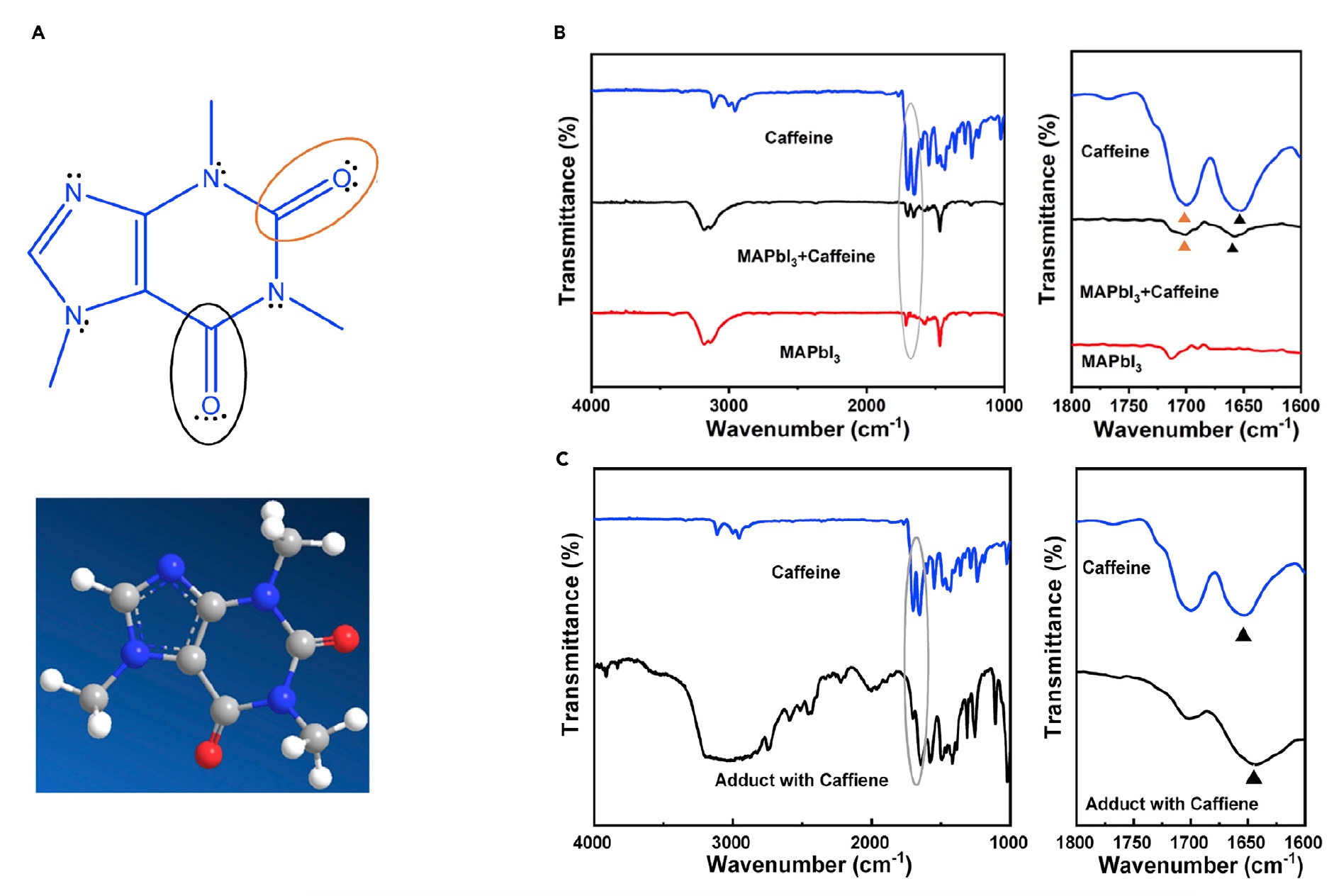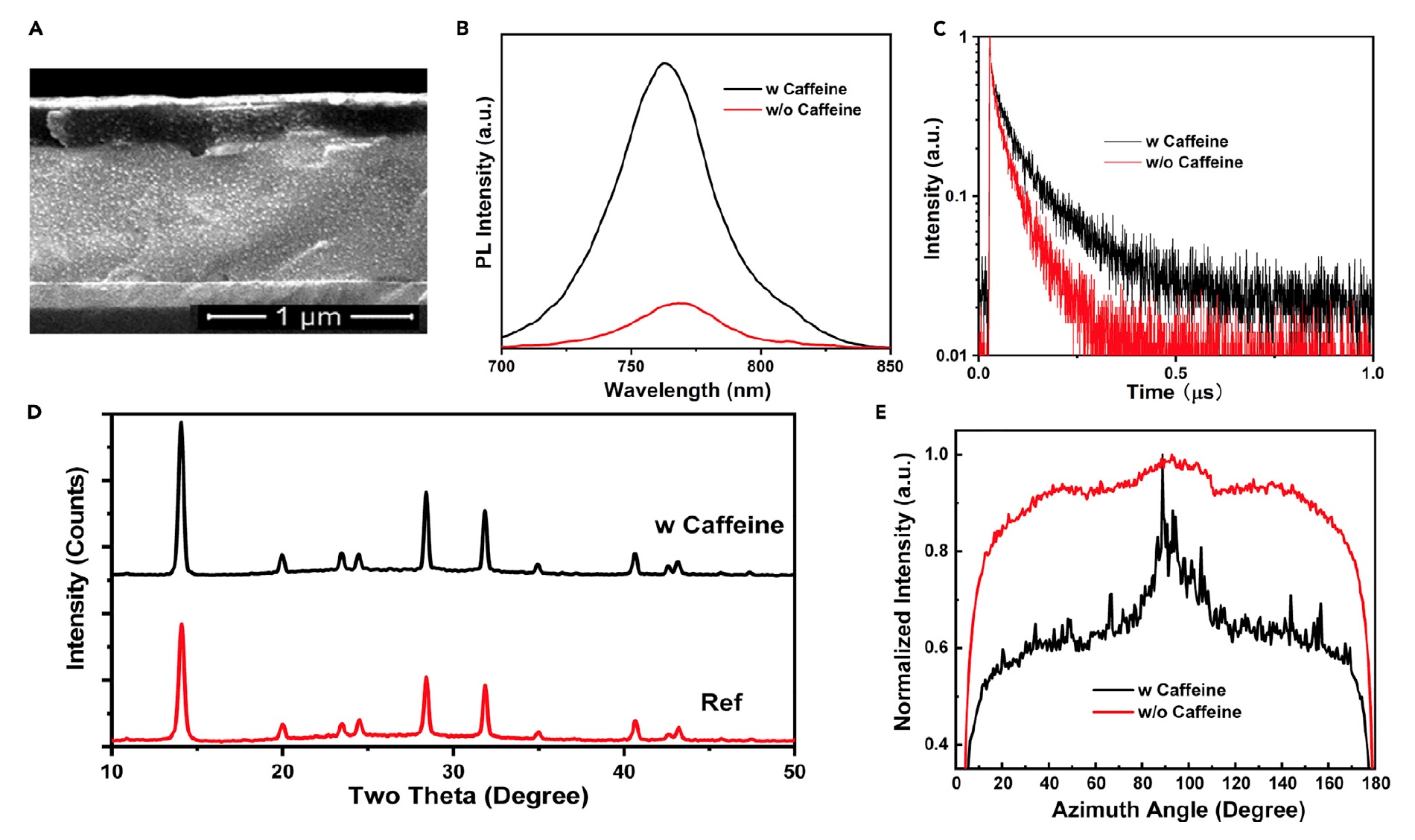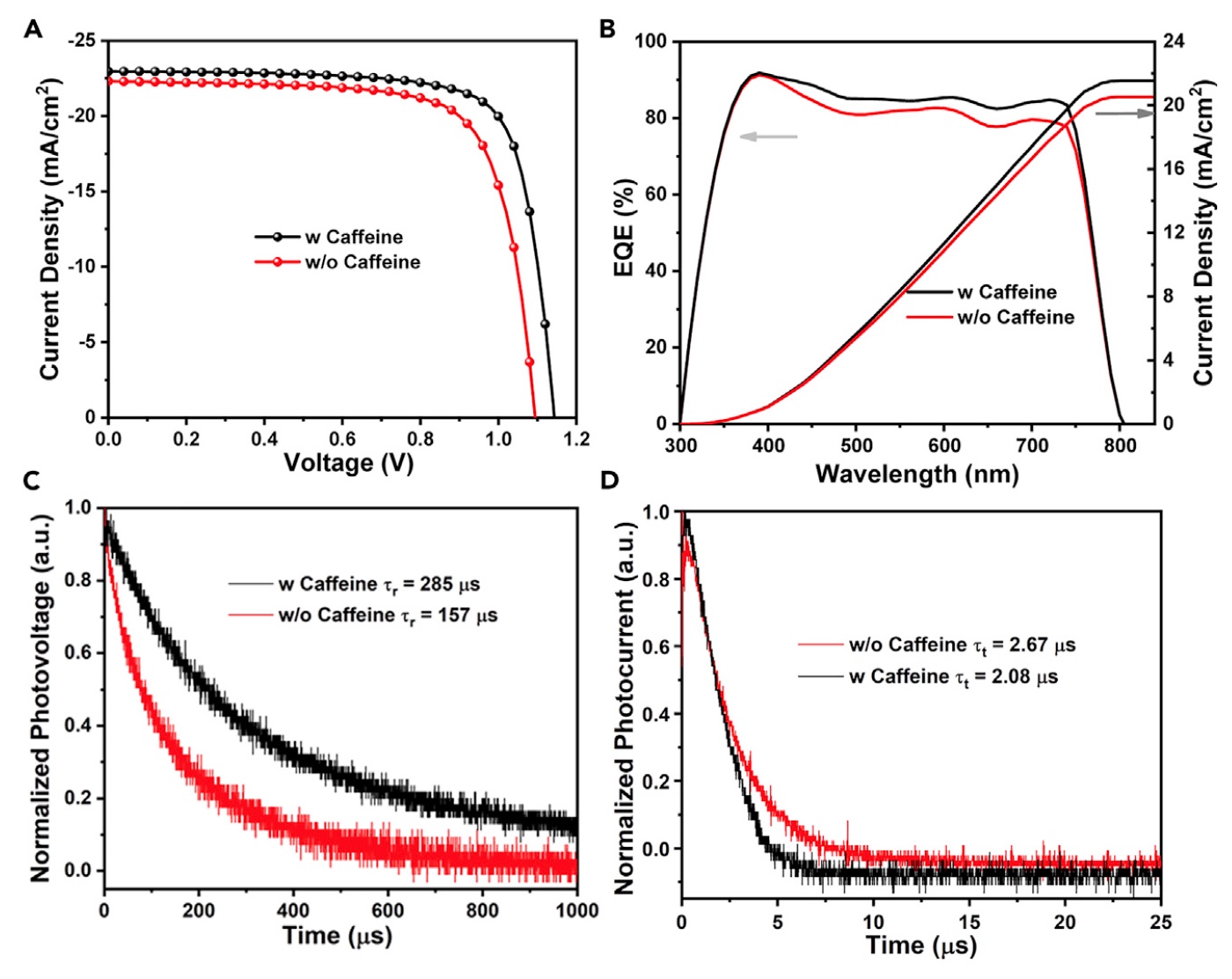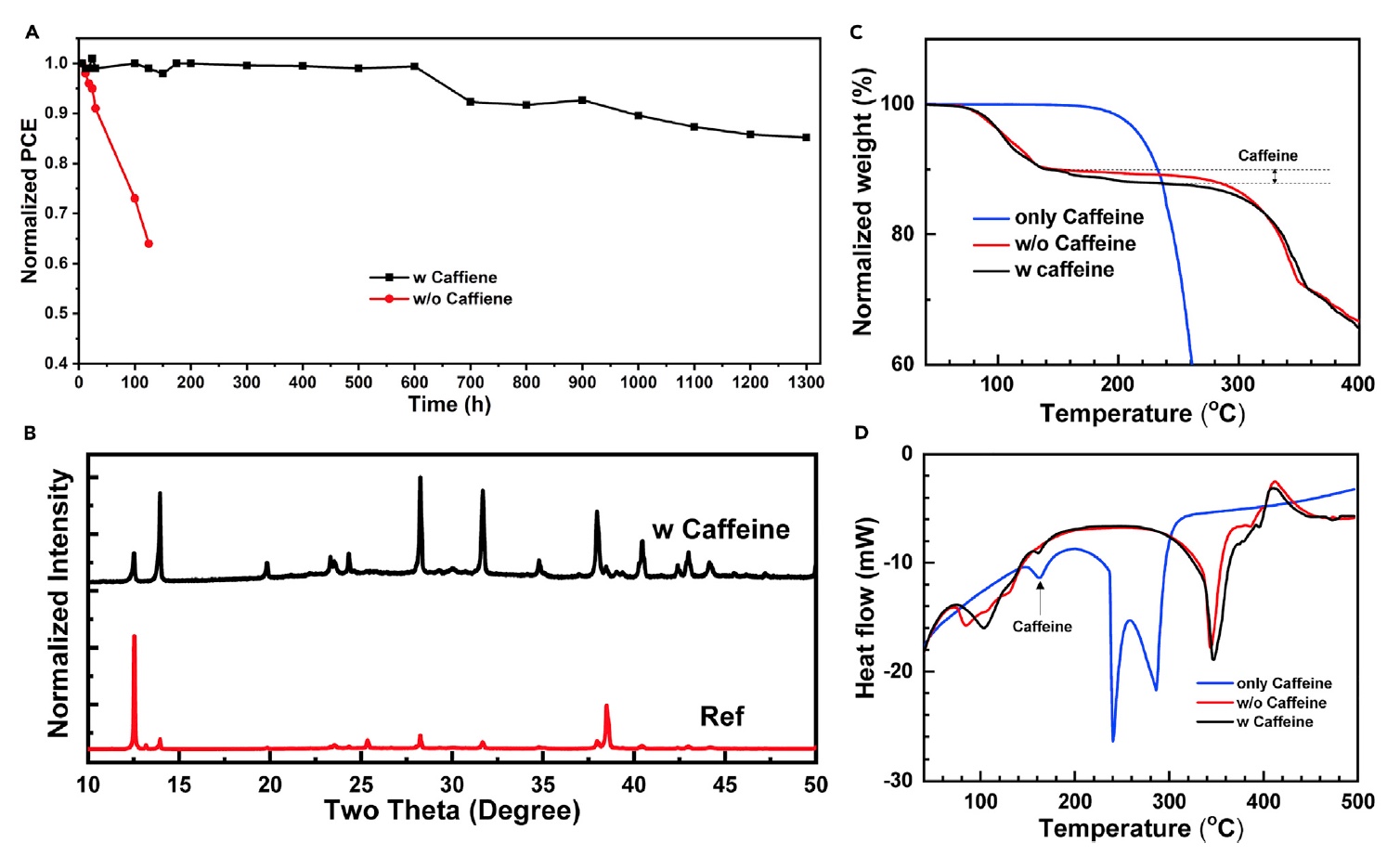Solar coffee: increase the efficiency of photocells due to caffeine

The morning begins hard, especially if you wake up at half past five. It is raining outside the window, hiding under the umbrellas the faces of the few larks running to work and owls returning home in measured steps. The alarm clock, being a bastard by nature, continues to ring the third time with its inherent accuracy. And for some reason it starts to seem that he does it with irritation and reproach. Observing the rule of the third night watch signal from the “Game of Thrones”, on the third call you need to get out of bed and, like white walkers, wander towards the kitchen. Kettle, cup, sugar, coffee. Everything, the morning officially began.
This little sketch clearly enough conveys the morning routine of many of us. And its main attribute is coffee, without which in the morning it is sometimes difficult to recall the presence of a brain in a skull. The invigorating effect of coffee is the result of the psychoactive effect of caffeine. What am I talking about? A group of scientists decided to use caffeine for the sake of photovoltaic cells for fun. And as we know, in every joke there is some truth, because this funny idea gave amazing results in practice. How was caffeine implemented in photovoltaic cells, what indicators did it improve and how much is this improvement justified? We will find answers to these and other questions (no, not in the coffee grounds) in the scientists' report. Go.
')
The basis of the study
As I mentioned earlier, this study really started as a joke over a cup of morning coffee in the lab cafeteria. However, scientists would not be scientists if they did not try to realize something similar, albeit ridiculous at first glance.
Apart from caffeine, the main test subject was not a simple photocell, but a perovskite one.
Photocell * is an electronic device for converting photon energy (sunlight) into electrical energy.
Perovskite * is a rare mineral calcium titanate (CaTiO 3 ).The perovskite photocell is based on materials from an organic-inorganic perovskite halide hybrid (hereinafter referred to as PVSK ). PVSK is a real breakthrough in solar energy, which is confirmed by usage statistics: 3.8% in 2009 and 23.3% at the end of 2018. However, one can only rejoice at the success of this material only in the laboratory, because problems with long-term stability do not allow its use in commercial production of photovoltaic cells. For example, PVSK based on cesium (Cs) and formamidinium (FA), which are popular in terms of their thermodynamic properties, cannot work normally at room temperatures. But it can PVSK based on methyl ammonium (MA).
But this option is not so simple: the organic cation MA PVSK has a volatile nature, which results in the rapid decomposition of PVSK and the precipitation of trigonal lead iodide (PbI 2 ) at elevated temperatures.
There is also a problem with the ions inside the PVSK. The researchers give a vivid example: ion I - can easily pass through the polycrystalline PVSK grains and go beyond the PVSK layer, and then act on the metal electrode under the influence of thermal energy. This results in defects in the form of non-radiative recombination regions. In addition, randomly oriented PVSK grains can lead to weak charge transfer in the vertical direction, which is a consequence of the rapid and uncontrolled growth of the PVSK film.
According to scientists, the previously overwhelming majority of works on improving the performance of PVSK-based photocells were aimed at the devices themselves, their architecture and structural improvements, and not PVSK.
In this study, scientists applied 1,3,7-trimethyl-xanthine to PVSK on the basis of methylammonium (MA) - the fancy scientific name for caffeine (Lewis structure and three-dimensional model 1A below). Using carboxyl groups in various chemical conditions, caffeine became something of a “molecular gate” that interacted with Pb 2+ ions , slowing down the growth of PVSK crystals. In addition, it was possible to achieve the desired orientation by increasing the activation energy.
As a result, it was possible to achieve excellent crystallinity of PVSK films with caffeine and a decrease in the density of defects, as well as a better vertical charge transfer. And the resulting coefficient of performance (COP) was previously unthinkable for this technology 20.25%. As for the thermal stability of the device, the scientists managed to achieve stability at a temperature of 85 ° C for more than 1,300 hours.
These are really great results, especially considering the comic roots of this study. And now let's take a closer look at what and how it worked.
Research results

Image number 1
Image 1B shows the results of infrared spectroscopy with Fourier transform of caffeine (blue line), pure MAPbI 3 (black line) and MAPbI 3 with caffeine (red line). Valence vibrations related to the two C = O bonds in pure caffeine appear at 1.652 cm -1 and 1.699 cm -1 . When caffeine was added to the MAPbI 3 film, the stretching of C = O was observed with a lower frequency from 1.522 to 1.657 cm -1 , while the vibrational mode C = O by 1.699 cm -1 retains its original value. This is an indication that caffeine is present in the MAPbI 3 film already after annealing and may have formed an adduct with MAPbI 3 through the interaction between Pb 2+ in PVSK and one of the C = O bonds in caffeine.
To further confirm the effect of caffeine on PVSK, scientists performed spectroscopy of the PbI 2 -MAI-DMSO-caffeine adduct, which also showed a C = O stretch displacement from 1652 to 1643 cm -1 ( 1C ).
These observations confirm that the interaction between C = O in caffeine and Pb 2+ ions forms a molecular gate, increasing the activation energy. And this in turn slows down the process of growing PVSK crystals, improving the overall crystallinity of PVSK films. In addition, this molecular gate may possibly interact with amorphous PVSK when heated, which can prevent thermal decomposition.

Image number 2
Image 2A is a SEM cross-sectional photo of a PVSK caffeinated film. Changes in the decay of stationary photoluminescence ( 2B ) and photoluminescence with time resolution ( 2C ) were carried out to study the film quality and charge recombination dynamics. The intensity of the photoluminescence of the PVSK caffeine film (black lines) was 6 times higher than in the film without caffeine (red lines). A blue shift was also noted from 770 to 763 nm, which once again confirms the decrease in the number of defects when caffeine is introduced into the structure of the PVSK film.
Further, X-ray structural analysis was performed to study the crystal structure of the PVSK film deposited on an indium and tin oxide ( 2D ) substrate. And for films with caffeine and without it, no diffraction peak at 12.5 was detected, which corresponds to the (001) planes of hexagonal PbI 2 . Both films showed the same PVSK tetragonal phase with the dominant (110) reflection of the lattice at 13.9, which is an excellent orientation for the PVSK films under study. The ratio of peak intensity (110) at 13.9 to peak intensity (222) at 31.8 increased from 2.00 to 2.43 with the addition of caffeine. This indicates a faster growth of (110) grains absorbing randomly oriented grains.
Measurements of grain sizes were also carried out using the Scherrer formula and the half-width (110) of the peak. With the introduction of caffeine, the grain size increased from 37.97 to 55.99 nm.
Image 2E shows us a graph of the normalized azimuthal angle along the (110) plane of MAPbI 3 films without caffeine (red line) and with caffeine (black line). At an angle of 90 °, the caffeinated film exhibits a rather pronounced peak in comparison with captive caffeine-free. A narrower half width suggests that caffeine contributed to the growth of PVSK grains along the plane, which improves charge transfer.
Next, the scientists analyzed the transient photocurrent ( TPC ) and transient photoelectric voltage ( TPV ).
Experimental photovoltaic cells were manufactured taking into account the nip planar structure, and indium tin oxide (ITO) was used as the anode. In turn, tin oxide nanoparticles were used as a layer of electron transport. In the role of the active layer acted as pure MAPbI 3 , and containing caffeine MAPbI 3 . The role of the hole transport layer (positively charged quasiparticles) was played by poly [bis (4-phenyl) (2,4,6-trimethylphenyl) amine] ([C 6 H 4 N (C 6 H 2 (CH 3 ) 3 ) C 6 H 4 ] n ) doped with 4-isopropyl-40-methyldiphenyl iodonium tetrakis (pentafluorophenyl) borate (C 40 H 18 BF 20 I). Silver (Ag) was used for the cathode.

Image number 3
Figure 3A shows the JV curves (current density, mA / cm 2 ) of devices based on pure MAPbI 3 and MAPbI 3 / caffeine, obtained using an AM1.5G artificial sun with an intensity of 100 mW / cm 2 . The percentage of caffeine incorporated into the system ranged from 0 to 2% of the total mass.
An increase in the amount of caffeine incorporated to 1% led to an increase in some characteristics, namely: no-load voltage (V oc ), short circuit current (J sc ), fill factor (FF) and reproducibility.
The maximum efficiency (PCE in the table below) of pure (without caffeine) MAPbI 3 was 17.59% (V oc : 1.074 V, J sc : 22.29 mA / cm 2 , FF: 73.46%). But with the presence of 1% caffeine in the system, the efficiency index increased to 20.25% (V oc : 1.143 V, J sc : 22.97 mA / cm 2 , FF: 77.13%).
Scientists attribute the increase in V oc and FF to a decrease in non-radiative recombination and crystalline defects, which is a consequence of passivation due to the introduction of caffeine into the system. The J sc indicator also increased from 22.29 to 22.97 mA / cm 2 (graph 3B ).
For a more detailed study of the effect of caffeine on system performance, scientists conducted a comparative analysis of charge transfer kinetics and recombination of the charge of photocells with and without caffeine. Analysis showed ( 3C ) that the charge recombination lifetime (t r ) of the caffeine-containing device (285 ms) was significantly longer than without caffeine (157 ms). From this it follows that the concentration of defects is significantly less. At the same time, the charge transfer time (t t ) while adding caffeine to the device decreased from 2.67 to 2.08 ms.

Table of indicators depending on the concentration of caffeine.
In order to confirm the effect of the molecular shutter of caffeine in photocells during the process of thermal decomposition, scientists conducted a test for resistance to constant thermal loads: 85 ° C in a nitrogenous medium.
The caffeinated device showed excellent thermal stability, retaining 86% of the initial efficiency after 1300 hours. But the device without caffeine in the same conditions retained only 60% of the primary efficiency. Scientists attribute this to ion migration, poor crystallization, and phase instability of pure MAPbI 3 at high temperatures.

Image number 4
Scientists needed to understand in more detail the effect of caffeine on the work of photocells in terms of ion migration and phase decomposition. For this, an X-ray structural analysis ( 4B ) of the devices was carried out after the tests for thermal stability.
The caffeine-free device showed a rather large peak at 12.5, associated with the (001) plane of hexagonal PbI 2 . Very weak diffraction at 13.9 implies a complete degradation of the PVSK crystal. But relative to (003) of the PbI 2 plane, a rather strong diffraction of 38.5 was observed.
As mentioned earlier, the very good crystallinity of PVSK due to the addition of caffeine should prevent the migration of ions during heating. A thermogravimetric analysis of caffeine and adduct was carried out to establish the phase stability and thermal properties of caffeine and the intermediate phase of the adduct. Graphs 4C and 4D show the mass loss and heat flux of caffeine, pure PVSK and PVSK + caffeine.
The analysis showed that caffeine completely decomposes at a temperature of about 285 ° C, while it showed excellent thermal stability at temperatures below 200 ° C. On graph 4C, we can see three stages of the mass loss of pure PVSK: 70 ° C, 340 ° C and 460 ° C. This is due to the sublimation of DMSO, MAI and PbI 2 , respectively. The sublimation temperature of MAI and PbI 2 in PVSK + caffeine was significantly higher, which indicates the need for more energy to break the link between caffeine and PVSK. This statement is confirmed by the analysis of heat fluxes ( 4D ). Thus, the relationship between caffeine and PVSK forms a molecular gate, from which increases the rate of required decay activation energy when heated.
For more detailed acquaintance with the nuances of the study I strongly recommend to look into the report of scientists and additional materials to it.
Epilogue
This study showed that the introduction of caffeine in PVSK materials allows us to obtain photovoltaic cells with high efficiency, reduce ion migration, reduce the number of defects and enhance thermal stability. The use of PVSK materials began not so long ago, however, it is already considered the most promising branch of solar energy. And this means that it is necessary to improve all aspects of this technology if we want to get devices that will have high performance indicators at low cost indicators. This work is precisely related to studies aimed at precisely this.
Using caffeine in the development of photocells sounds like a joke, it was a joke over a cup of coffee in the morning in the laboratory. But with scientists, jokes are bad, and any, even the strangest idea, can give an excellent result, if you apply knowledge, ingenuity and a little creative approach.
Thank you for your attention, remain curious and have a good working week, guys.
Thank you for staying with us. Do you like our articles? Want to see more interesting materials? Support us by placing an order or recommending to friends, 30% discount for Habr's users on a unique analogue of the entry-level servers that we invented for you: The whole truth about VPS (KVM) E5-2650 v4 (6 Cores) 10GB DDR4 240GB SSD 1Gbps from $ 20 or how to share the server? (Options are available with RAID1 and RAID10, up to 24 cores and up to 40GB DDR4).
VPS (KVM) E5-2650 v4 (6 Cores) 10GB DDR4 240GB SSD 1Gbps before summer for free if you pay for a period of six months, you can order here .
Dell R730xd 2 times cheaper? Only we have 2 x Intel TetraDeca-Core Xeon 2x E5-2697v3 2.6GHz 14C 64GB DDR4 4x960GB SSD 1Gbps 100 TV from $ 199 in the Netherlands! Dell R420 - 2x E5-2430 2.2Ghz 6C 128GB DDR3 2x960GB SSD 1Gbps 100TB - from $ 99! Read about How to build an infrastructure building. class c using servers Dell R730xd E5-2650 v4 worth 9000 euros for a penny?
Source: https://habr.com/ru/post/450094/
All Articles